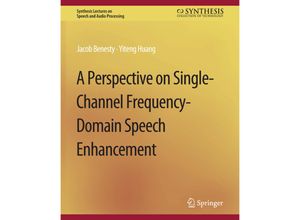This book focuses on a class of single-channel noise reduction methods that are performed in
the frequency domain via the short-time Fourier transform (STFT). The simplicity and relative
effectiveness of this class of approaches make them the dominant choice in practical systems.
Even though many popular algorithms have been proposed through more than four decades of
continuous research there are a number of critical areas where our understanding and
capabilities still remain quite rudimentary especially with respect to the relationship
between noise reduction and speech distortion. All existing frequency-domain algorithms no
matter how they are developed have one feature in common: the solution is eventually expressed
as a gain function applied to the STFT of the noisy signal only in the current frame. As a
result the narrowband signal-to-noise ratio (SNR) cannot be improved and any gains achieved
in noise reduction on the fullband basis come with a price to pay which is speech distortion.
In this book we present a new perspective on the problem by exploiting the difference between
speech and typical noise in circularity and interframe self-correlation which were ignored in
the past. By gathering the STFT of the microphone signal of the current frame its complex
conjugate and the STFTs in the previous frames we construct several new multiple-observation
signal models similar to a microphone array system: there are multiple noisy speech
observations and their speech components are correlated but not completely coherent while
their noise components are presumably uncorrelated. Therefore the multichannel Wiener filter
and the minimum variance distortionless response (MVDR) filter that were usually associated
with microphone arrays will be developed for single-channel noise reduction in this book. This
might instigate a paradigm shift geared toward speech distortionless noise reduction
techniques. Table of Contents: Introduction Problem Formulation Performance Measures
Linear and Widely Linear Models Optimal Filters with Model 1 Optimal Filters with Model 2
Optimal Filters with Model 3 Optimal Filters with Model 4 Experimental Study

